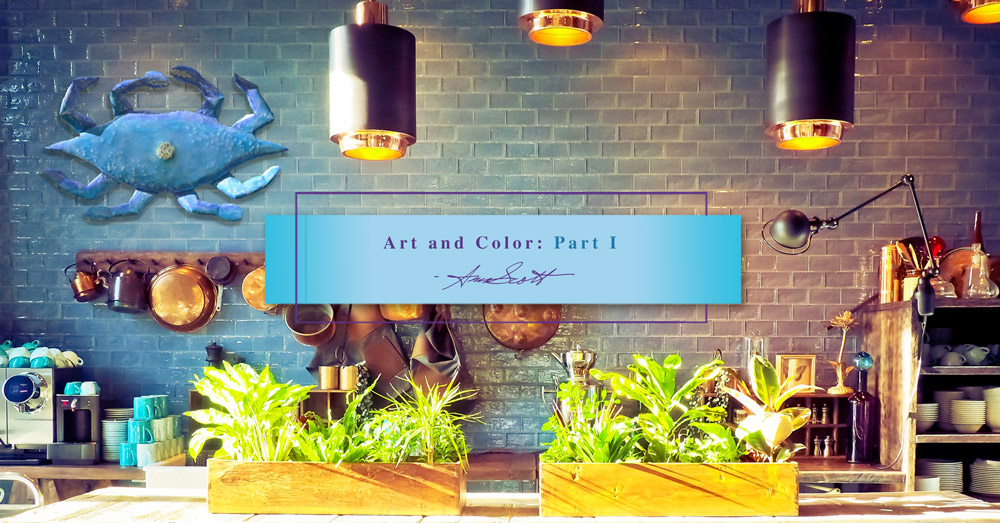Coastal Decor Blog
Art And Color: Part I
Why color is nothing to be scared of (most of the time)
Anyone else notice that the trending themes of color are kind of on the white side of the color palette? Or that our selections of whites went from around 3 to 3,000 in the last decade? Don’t get me wrong, please. There is something classically sophisticated and safe about a good neutral/white palette, and I use it often, but color needs to find its way back into the white zone, so that both white and color will enhance each other, creating unique and artistic styles that we each love to make our own.
So, to make things simple, there are two types of people when it comes to color: those that dabble in it reservedly, keeping a very low profile, creating a pretty standard, neutral space. Then there are also those that approach color like a person on a Keto diet just given a loaf of warm, freshly baked bread. Neither one of these approaches is wrong! It’s just that we all could use a little nudge or subduing when it comes to getting a great color balance in our spaces.
Why should we not be afraid of color? Well, color has a long and “colorful” history. Once a sign of wealth and royalty, color was meant to evoke images of richness, and draw in the beholder with its complex tones and hues. Different colors evoke different emotions as well. The type of feeling you want and need in a room, according to its primary function, will greatly influence your color choices. More neutral tones are a wonderful foundation that has always been used by the poorest of farmers to the highest of designers for showcasing art or collections. Therefore, it stands to reason that a white or neutral palette is great! But it’s the coveted colors of blankets, throws, towels, or artwork that really highlight thoughtful and intentional good design. When choosing colors, choose a warm or cool neutral/white tone, and then pick no more than three complimentary colors (you can find these on the web), or three different variations of the same color. What’s so great about color is that it’s dynamic, meaning it changes nuances, character, and perception as it is paired with different colors in different environments. If you have a house with lots of wood in it, pairing really dark colors might not work well except in a library setting, but that same dark color for a couch, rug, or artwork could be striking against a light wall with all that wood around. At the same time, if you have lots of windows and walls and little wood in a house, darker colors on the walls might stand out well against an array of lighter furniture and sunlight. Most of the time, I can safely say, DO NOT try to match your artwork, decor, or furniture with your paint. You do not want matchy-matchy. Instead, think how to contrast and compliment in your choices. Your choice of style (modern, classic, rustic, traditional, low country, coastal, etc.) has colors it lends itself more commonly to, so look up some typical palettes for your desired style and see if there aren’t some inspiring images of what you’re going for. I’d wager you’d find a good neutral + color palette to start with. Then tweak accents as you go…use the style you want and the lifestyle you need to help you get colors, textures, and themes that are best for your space. For example, if you love black, but have a shedding white dog like I do, might be best to have lighter walls and furniture with black pottery, pillows, or artwork complimenting them, and then stick a nice patterned rug, throw, or bedding that has black in it, but will hide the hair.
As mentioned before, color isn’t supposed to compete with art, furniture, rugs, architecture, and all the white and neutral simplicity you desire; rather, it’s supposed to complete it. Keep that in mind, as you carefully add your simple palette of color one layer at a time. It’s always easier to add than it is to take away, let’s not forget. But be bold with your choices, after some consideration, and chances are, that boldness will make its debut in a beautiful and striking color setting.
Anna Scott
January 29, 2020


